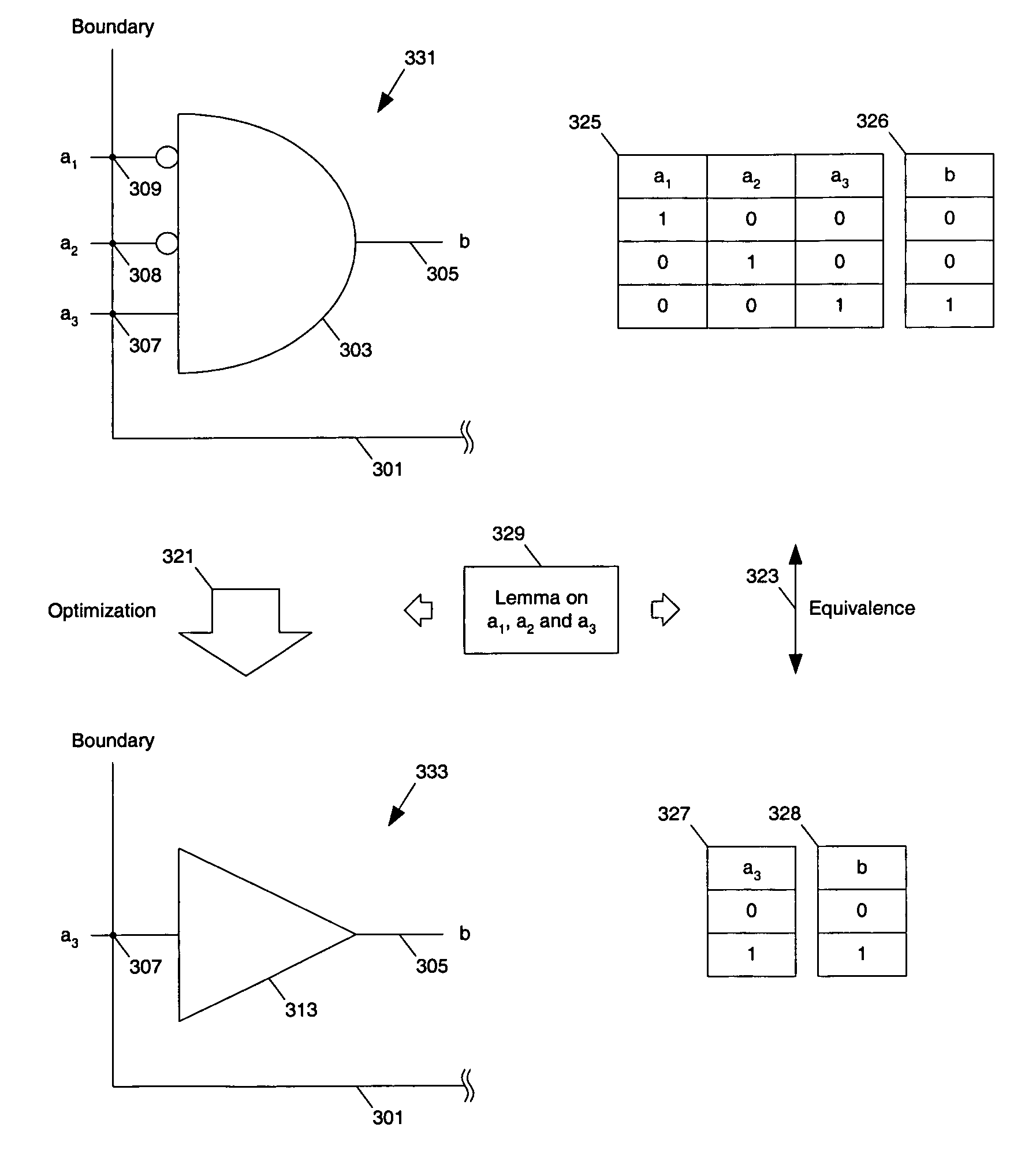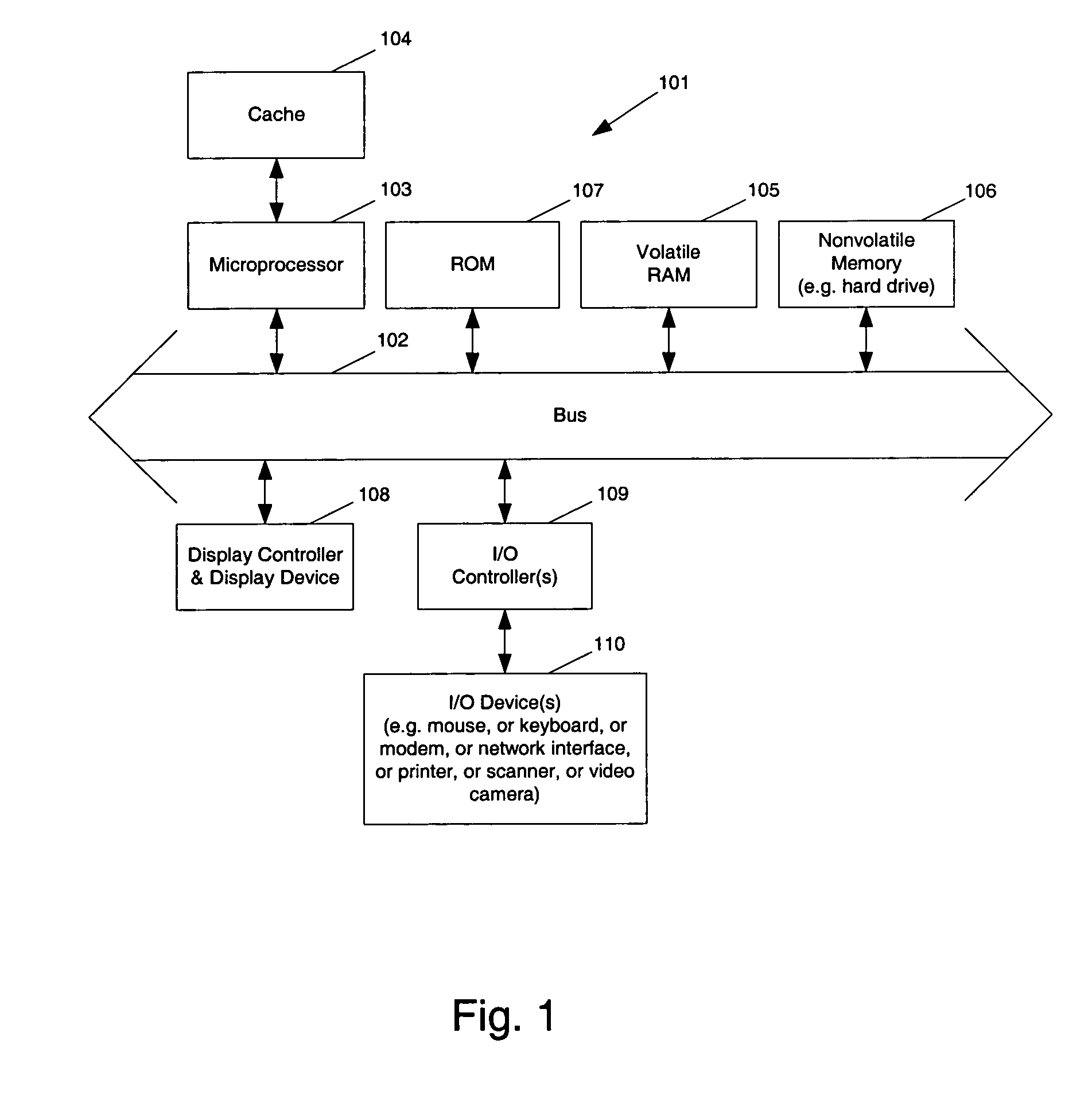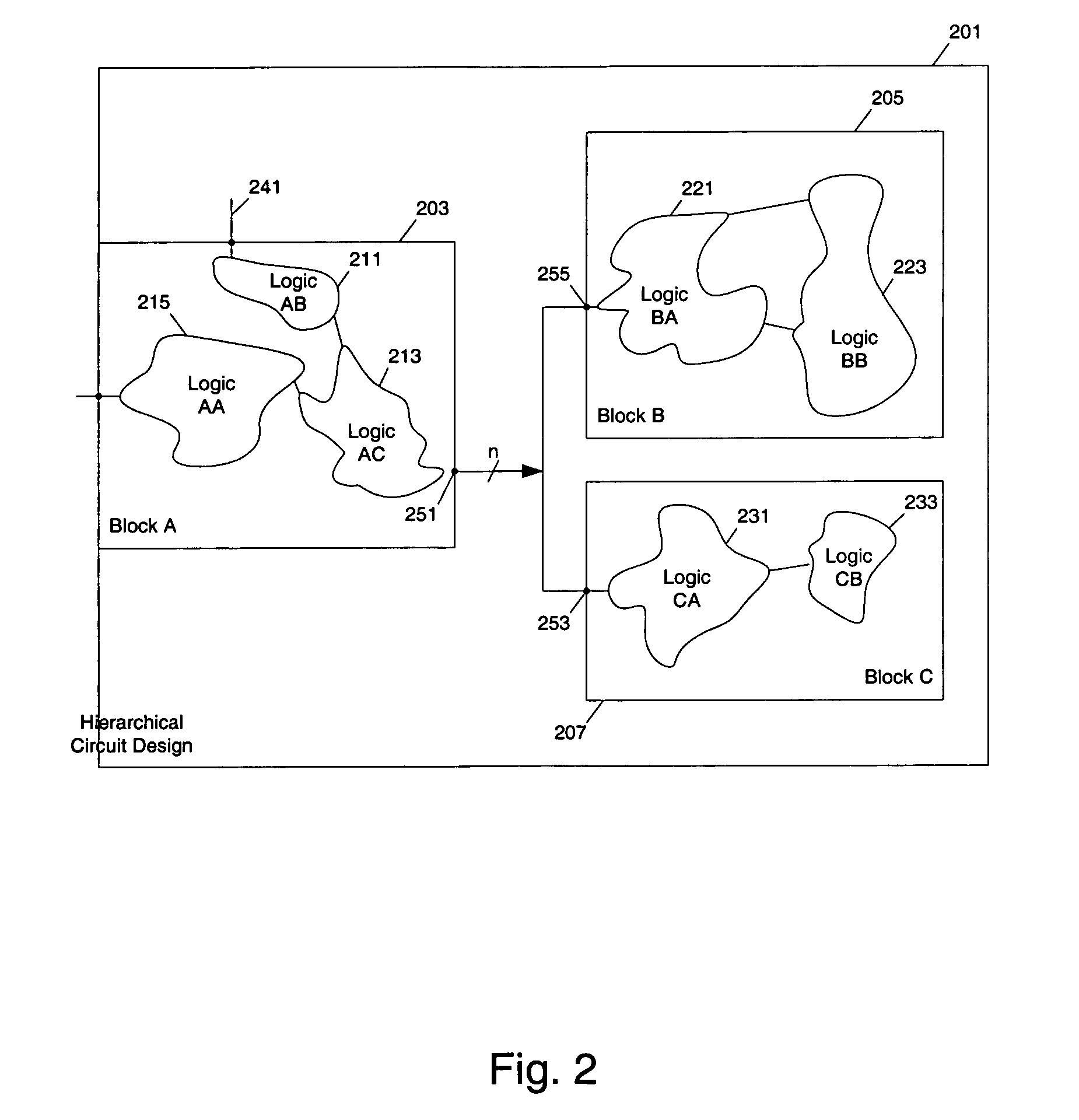[0009]In one embodiment of the present invention, a hierarchical block is optimized and transformed during design synthesis using one or more lemmas at the boundary of the hierarchical block. For example, the lemmas are automatically generated to specify range information for input boundary nodes. The lemmas are also used for the equivalence checker to perform hierarchical equivalence checking. Equivalence of hierarchical blocks is individually checked, in view of the lemmas. Thus, based on the lemmas, optimizations across hierarchical boundaries can be performed, while the hierarchical structure of the design is preserved so that equivalence checking of hierarchical circuit designs can still be based on the equivalence of individual hierarchical blocks.
[0010]In one aspect of the present invention, a method to design a circuit, includes: automatically generating at least one lemma at one or more locations of a first design of the circuit; based on the at least one lemma, transforming the first design of the circuit into a second design of the circuit; and checking equivalence between the first and second designs of the circuit using the at least one lemma. In one example, the at least one lemma specifies range information for one or more signal lines (e.g., possible combinations of signal values in a plurality of signal lines, possible combinations of signal values in a signal line in a number of clock cycles which can be used to automatically infer a multi-cycle path). The one or more locations may include one of: signal lines of a bus; input / output (I / O) lines of a state machine; the fanout of a logic element; and, a common support point of a plurality of logic elements. In one example, generating the at least one lemma includes determining range information at the one or more locations of the first design of the circuit. In one example, the at least one lemma is proved to prove the equivalence between the first and second designs. In one example, transforming the first design includes: transforming a first portion of the first design into a first portion of the second design based on the at least one lemma; and, transforming a second portion of the first design into a second portion of the second design. In one example, checking equivalence between the first and second designs includes: proving the at least one lemma; and, checking equivalence between the first portion of the first design and the first portion of the second design according to the at least one lemma, which is based on range information at output boundaries of the second portion of the first design. In one example, the first design includes a partition of a plurality of portions; and transforming the first design of the circuit into the second design of the circuit maintains the partition of the plurality of portions.
[0011]In one aspect of the present invention, a method to design a circuit with a plurality of portions, includes: automatically generating at least one lemma at one or more boundaries of the plurality of portions of the circuit; individually transforming the plurality of portions of the circuit from a first design into a second design using the at least one lemma; and exporting the at least one lemma. In one example, the at least one lemma specifies range information at the one or more boundaries of the plurality of portions. In one example, the at least one lemma is exported into a format readable by a software program for equivalence checking which is capable of checking equivalence between the first design of the plurality of portions of the circuit and the second design of the plurality of portions of the circuit based on the at least one lemma. In one example, generating the at least one lemma includes: determining range information at an output boundary of the plurality of portions of the circuit; and propagating the range information to one or more input boundary of the plurality of portions of the circuit. In one example, the at least one lemma is exported into a file on a data processing system. In one example, the at least one lemma is exported from a first application process for use by a second application process (e.g., a process that uses the at least one lemma for equivalence checking).
[0012]In one aspect of the present invention, a method for circuit design, includes: individually transforming a plurality of portions of a first design of a circuit into a plurality of portions of a second design of the circuit respectively, where a first one of the plurality of portions of the first design is transformed into a first one of the plurality of portions of the second design based on a lemma; and checking equivalence between the first and second designs of the circuit through checking equivalence between each of the plurality of portions of the first design and a corresponding one of the plurality of the second design, where equivalence between the first one of the plurality of portions of the first design and the second one of the plurality of portions of the second design is checked based at least on the lemma. In one example, the lemma specifies range information at one or more boundaries of the plurality of portions of the first design (e.g., on one or more input boundary nodes, or on one or more output boundary nodes which provide input to the first one of the plurality of portions of the first design). In one example, information specifying the lemma is imported from a file on a data processing system; in another example, the lemma is automatically generated from the first design of the circuit.
 Login to View More
Login to View More  Login to View More
Login to View More 


